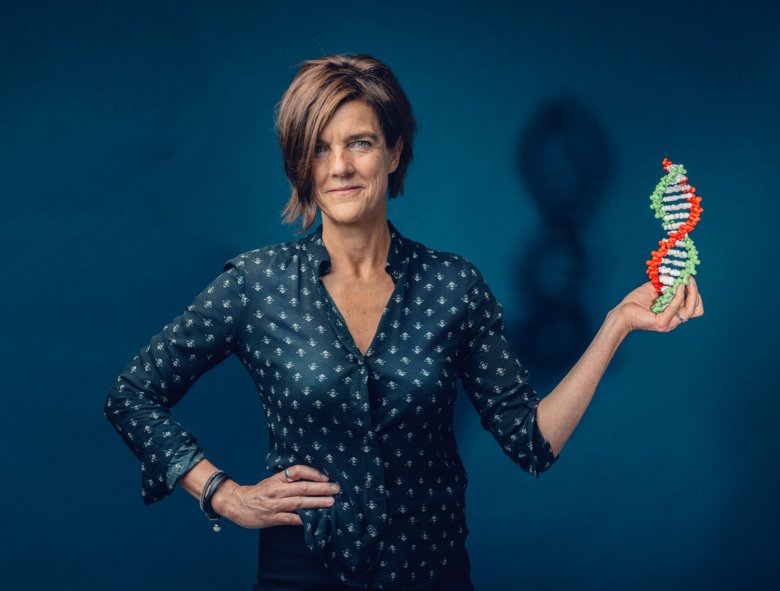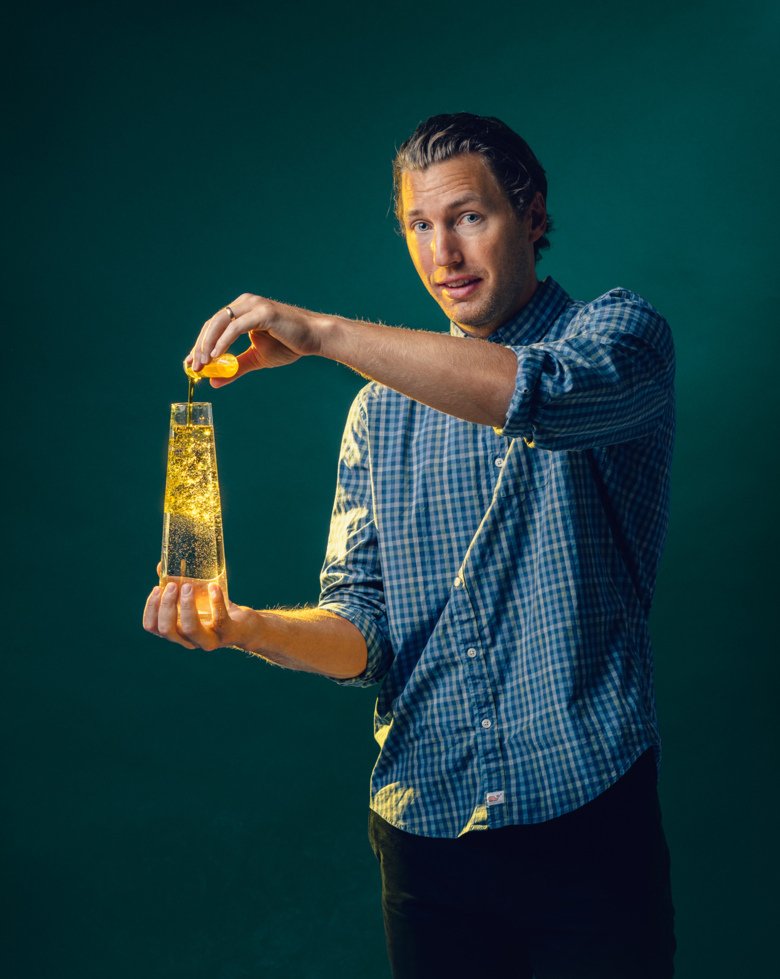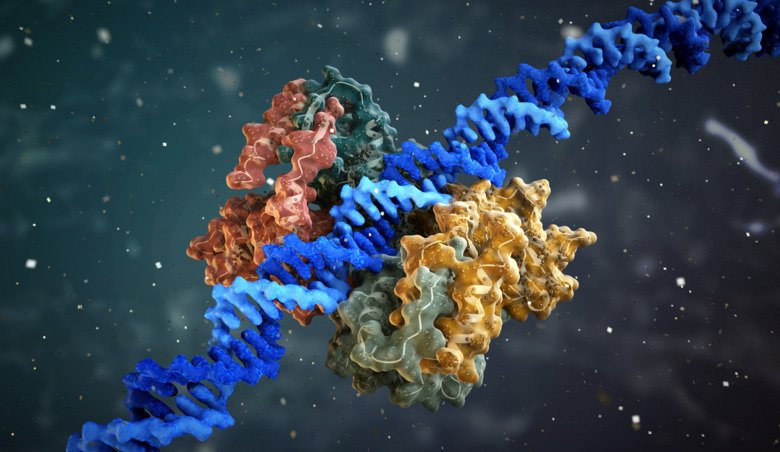They see beauty in the smallest things
A lot of medical research revolves around molecules and how they function. These tiny components of our bodies can be very important for our health. Meet three researchers who each present their favourite molecule.
Told to: Magnus Trogen Pahlén. First published in Swedish in the magazine Medicinsk Vetenskap nr 3/2021.
“The ability to change shape makes the DNA helix even more beautiful”
Name: Camilla Björkegren
Title: Professor at the Department of Biosciences and Nutrition and the Department of Cell and Molecular Biology, Karolinska Institute.
Researches: Chromosome splitting and stability.
Favourite molecule: DNA

“The DNA of our chromosomes is extremely dynamic. Genes are read or silenced, DNA is damaged and repaired, chromosomes double before cell division and then split into daughter cells. All these processes are affected by SMC protein complexes. They consist of a whole family of complexes that organise the chromosomes by forming dynamic links between two DNA regions. If the SMC complexes don’t work as they should, the development from embryo to human is disrupted and the risk of developing cancer increases.
However, to say that SMC complexes are my favourite molecule is a bit like saying that my favourite activity is skiing without sparing a thought for snow. So my two favourites are SMC complexes and DNA, or rather the dynamic that exists between them. A lot of people see the beauty of the DNA molecule as lying in its double helix shape and the fact that it stores the code of life in a stable and effective way. It’s now becoming even clearer that there is communication between the DNA and SMC complexes. That the DNA spiral is not a passively twisted rope handled by a variety of proteins, but rather influences its own organisation and function by changing its structure. This ability to change shape makes the DNA helix even more beautiful and constitutes my scientific focus.
The SMC complex was discovered in the 1990s during research on the separation of chromosomes through cell division, and after my disputation, I worked in one of the labs in Vienna, where it was discovered. Today, we know that the complex can be found in most organisms and often in several variants. Three are found in humans and we’re investigating the SMC complex which is the least researched.”
“Spheres of energy”
Name: Niklas Mejhert
Title: Researcher at the Department of Medicine, Huddinge, Karolinska Institute.
Researches: Ability of cells to store fat.
Favourite molecule: Triglycerides.

“Studying lipid droplets in fat calls is one of the least sexy things you can do as a cell researcher. It’s considered much cooler to focus on mitochondria in neurons. But if you look at lipid droplets under a microscope, they are actually very beautiful. Perfectly round balls, which fly around in each cell like spheres of pure energy.
The reason they piqued my curiosity was precisely because I thought they were aesthetically pleasing. They form part of a system created though evolution to store energy for periods where food was scarce.
The droplets mostly consist of triglyceride molecules, which are built up and broken down all the time, depending on how much energy the cell needs. It’s a constant process of construction and dismantling, which is very dynamic. Here lie a number of simple but unsolved questions, such as how does the cell know how much fat it contains? This is something which is important for it to be able to maintain its function.
That my research is linked to public health has been crucial for me and is why I was drawn to studying obesity. Triglycerides play a key role here: how are they stored, in what cells and why can some cells store them while others can’t? You can have two people with the same amount of fat tissue, yet it’s only unhealthy for one of them. I believe that the answer can be found in how good the fat cells are at storing energy.
Historically, fat tissue has been perceived as very inactive, something which insulates against the cold or works as a mechanical protection for certain organs. But today we understand that it also signals degree of fullness to the body. There are still a lot of clinically relevant questions surrounding this beautiful but often despised organ.”
“Deceptively simple”
Name: Urban Lendahl
Title: Professor at the Department of Cell and Molecular Biology, Karolinska Institute.
Researches: Function of the signalling pathway Notch.
Favourite molecule: Notch.

“The beauty in Notch lies in it being so simple to describe, which is in strong contrast to how important it is for the development of everything from skin cells to blood vessels and nerve cells. This deceptive simplicity tickles the basic researcher in me and has led me to focus on understanding Notch in detail for the last thirty years.
My journey started when I returned from MIT in Boston with a curiosity surrounding what makes stem cells mature. Researchers had found a signalling pathway in fruit flies which they called Notch and had shown that it was important for the development of the nervous system. I wanted to find out if it was also present in mammals and what function it had.
Today, we know that Notch is crucial for the development of all cell types in the body by regulating the transition of stem cells to skin cells, muscle cells and nerve cells, among others. If there’s a defect in this signalling pathway, this leads to serious diseases, and cancer in particular. If Notch is overactive, too many cells remain as immature stem cells, which often causes cancer.
I’m proud that my research group was the first in the world to find the NOTCH3 gene, which helped French researchers understand the reason for CADASIL, a disease which causes strokes and dementia. Even though there’s no cure for the disease, there now exists a genetic diagnosis method and we’re working to develop therapies.
When my son Henry was a teenager, we built a Notch museum in Minecraft together. When we realised that the creator of Minecraft went by the pseudonym ‘Notch’, we got in touch with him. I wrote a physical letter to him to check that it was okay. He responded that he thought it was interesting research and that it was fun that we were using Minecraft for the animation. Since then, I have used our museum when talking to the general public about Notch research.”
More reading
 Photo: TT,Science Photo Library
Photo: TT,Science Photo LibraryThe proteins that fix (almost) everything
Proteins can make any inventor green with envy. It is proteins that make the body work. But when these same super-substances make mistakes, we may get sick with things like cancer or Alzheimer's disease. The job of researchers is to sort out the proteins when they malfunction.
